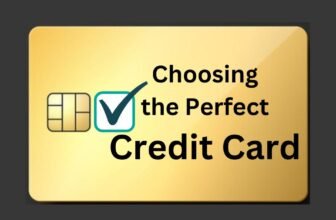
Payroll by Credit Card is a convenient payment method that ensures your employees receive their salaries on time, even when you are facing cash flow issues. With seamless integration with leading payroll software, you can continue running payroll as usual and select the option to pay by card. This allows you to charge all or a portion of your payroll expenses to your credit card, instantly transferring the funds to your bank account or directly to your employees. Moreover, this method still allows you to earn all the rewards associated with using credit cards for payments. So, in addition to providing a solution for managing cash flow challenges, Payroll by Credit Card also offers a way to maximize your credit card usage benefits.
Additionally, Payroll by Credit Card eliminates the need for employees to physically deposit their paychecks, as the funds are directly transferred to their accounts. It will not only save your time as but also decrease the chances of data loss. Furthermore, it provides a more secure and reliable payment method, ensuring employees receive their salaries without delays or complications.
Table of Contents
Pros of Using a Credit Card for Payroll
Paying your payroll with a credit card offers several benefits that can streamline your payment process and make it more convenient for your business. Some benefits of paying payroll by credit card are as follows:
- Allows for easy tracking of expenses
- Detailed record of transactions
- Simplifies expense management during tax season or financial audits
- Saves time and effort on manual reconciliation
- Eliminates the need for paper checks or cash payments
- Reduces administrative tasks such as printing, signing, and distributing checks
- Mitigates risk of lost or stolen checks
- Provides added security for employees receiving payments
- Offers potential rewards or cashback through credit card companies
- Can offset some of the costs associated with payroll expenses. However, weigh against potential downsides.
- Provides additional benefits offered by credit card companies
- Rewards programs that allow for points or cashback on purchases, including payroll expenses
- It can offset some of the costs associated with paying employees.
Cons of Using a Credit Card for Payroll
While there are clear benefits to paying your payroll with a credit card, it’s essential to consider the potential drawbacks as well:
- One primary concern is the additional fees that may come with using a credit card for payroll.
- Credit card companies often charge merchant fees for each transaction.
- They can also reduce the overall value of using a credit card for payroll.
- If you don’t pay off the balance in full each month, you may incur interest charges, further increasing the cost.
- Some employees may prefer traditional payment methods like paper checks or direct deposits.
- Employees may be hesitant to accept payment through a credit card.
- It’s crucial to communicate with your employees and address any concerns they may have about privacy or security when using a credit card for payroll.
- It’s vital to carefully evaluate the potential fees and address employee concerns before paying your payroll with a credit card.
Factors to Consider Before Deciding to Pay Payroll with a Credit Card
Before deciding whether to pay your payroll with a credit card, there are several factors you should carefully consider.
Assessment: Firstly, assess the financial impact. Calculate the potential fees, including merchant fees and interest charges, to understand the actual cost of using a credit card for payroll. Compare this with the convenience and benefits mentioned earlier to determine if it aligns with your business objectives.
Evaluation: Evaluate the preferences of your employees. Conduct surveys or hold discussions to understand their comfort level with this payment method. Address any concerns and ensure they are on board with the decision. Employee satisfaction and confidence in the payment process are vital for a smooth transition.
Review all factors: Review your credit card options and select one that best suits your business needs. Consider factors such as interest rates, rewards programs, and additional benefits relevant to your industry or organization.
Consultation: Consult your accounting or finance team to ensure that integrating credit card payments for payroll aligns with your existing financial systems and processes. This will help minimize any potential disruptions or challenges during the implementation phase.
Once you have thoroughly evaluated these factors, you can move forward with setting up credit card payments for your payroll. Let’s explore the process in the next section.
How to Set Up Credit Card Payments for Payroll
Setting up credit card payments for payroll requires a systematic approach to ensure a smooth transition. Follow these steps to get started:
- Research credit card options: Compare different credit cards to find the one that best suits your business needs. Look for cards with low fees, favourable interest rates, and any additional benefits relevant to your industry.
- Assess employee comfort: Communicate with your employees and address any concerns they may have about using a credit card for payroll. Provide clear explanations about the security measures in place to protect their information.
- Update payroll systems: Coordinate with your payroll provider or software to integrate credit card payments into your existing system. Ensure that all necessary changes are made to accommodate this new payment method.
- Train your team: Provide training to your HR and finance teams on processing credit card payments for payroll. Ensure they know the new procedures and can effectively handle potential issues.
- Launch a pilot program: Consider starting with a pilot program to test the new payment method before fully implementing it. This will allow you to identify and address any issues or challenges.
- Monitor and evaluate: Regularly monitor the performance and impact of credit card payments for payroll. Assess the benefits and drawbacks to determine whether adjustments or improvements are needed.
By following these steps, you can successfully set up credit card payments for your payroll. However, choosing the right credit choosiness is essential. Let’s explore some of the most important credit cards for payroll payments.
Best Credit Cards for Payroll Payments
When selecting a credit card for payroll payments, it’s crucial to consider your specific business requirements. Here are a few credit cards that are often recommended for their features and benefits:
- Cashback Rewards Card: This card offers cashback on all purchases, including payroll expenses. Look for cards with high cashback percentages and low annual fees to maximize your savings.
- Low-Interest Card: If you anticipate carrying a balance on your credit card, consider a credit card with a low interest rate. This will help minimize interest charges and reduce the overall cost of paying your payroll with a credit card.
- Business-Specific Card: Some credit cards are specifically designed for businesses and offer features tailored to their needs. Look for cards with expense tracking tools, employee spending limits, and customizable reporting options.
- Travel Rewards Card: If your business involves frequent travel, consider a credit card that offers travel rewards. These cards often provide benefits such as airline miles, hotel discounts, and travel insurance, which can be valuable for your business and employees.
Consider annual fees, interest rates, rewards programs, and additional benefits that align with your business goals.
Tips for Managing Credit Card Payments for Payroll Effectively
Implementing credit card payments for payroll requires efficient management to maximize the benefits and minimize the risks. Here are a few tips to help you manage credit card payments effectively:
- Set up automatic payments: Schedule automatic payments for your credit card to ensure you never miss a deadline. This will help you to maintain a worthy credit score.
- Monitor credit card statements: Regularly review your credit card statements to identify any unauthorized charges or errors. Promptly report any discrepancies to your credit card issuer for resolution.
- Track and categorize expenses: Use tracking tools or software to categorize your payroll expenses accurately. This will simplify your bookkeeping and help you analyze your spending patterns.
- Minimize credit card usage: While paying your payroll with a credit card can be convenient, it’s essential to strike a balance. Avoid excessive credit card usage and ensure it aligns with your financial strategy.
- Communicate with employees: Maintain open lines of communication with your employees regarding payment processes and any changes. Address any concerns or questions promptly to foster trust and transparency.
By following these tips, you can effectively manage credit card payments for your payroll and optimize the benefits of this payment method for your business.
Alternatives to Paying Payroll with a Credit Card
While paying your payroll with a credit card offers several advantages, it may not be the best option for every business. Consider these alternatives if you decide that credit card payments are not suitable for your organization:
- Direct deposit: Direct deposit is a popular and widely accepted method of paying employees. It ensures prompt and secure payments while minimizing administrative tasks.
- Traditional checks: If your employees prefer physical checks or you have specific payroll requirements, traditional checks may be a viable option. However, remember the additional administrative tasks and potential risks of paper checks.
- Online payment platforms: Explore online payment platforms that offer payroll services. These platforms often provide a range of payment options, including direct deposit and electronic transfers, while offering additional features such as tax calculations and reporting.
- Mobile payment apps: Mobile payment apps are gaining popularity as a convenient way to pay employees. These apps allow you to transfer funds directly to your employees’ bank accounts, simplifying payment.
Consider your business needs, employee preferences, and the specific requirements of your industry when deciding on the most suitable payment method for your payroll.
Conclusion:
In conclusion, paying your payroll with a credit card can offer convenience, improved expense tracking, and potential rewards. However, it’s essential to carefully evaluate the associated fees, address employee concerns, and choose the right credit card for your business needs.
So, paying your payroll with a credit card can offer several benefits for businesses, such as cashback rewards, low interest rates, and tailored features. However, it’s crucial to carefully review the terms and conditions of each credit card and implement effective management strategies to maximize the advantages and minimize risks.
FAQs: Can you Pay Payroll with a Credit Card?
Are there any benefits to paying payroll with a credit card?
There are some benefits to paying payroll with a credit card, such as earning rewards points or cashback on your company’s expenses. Additionally, it can also help improve your cash flow and provide you with additional time to pay off the credit card balance.
What are the potential drawbacks of using a credit card for payroll?
One of the main drawbacks of using a credit card for payroll is the high-interest rates and fees that may apply. This could end up costing your company more in the long run. Additionally, not all employees may have access to a credit card, which could create problems with payment distribution.
Are there any legal restrictions on paying payroll with a credit card?
Yes, there are some legal restrictions that you should be aware of. For example, the Fair Labor Standards Act (FLSA) prohibits employers from making debit or credit card payments to employees without their consent.






